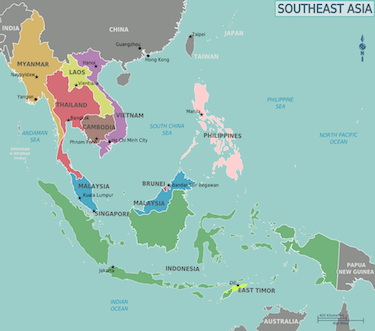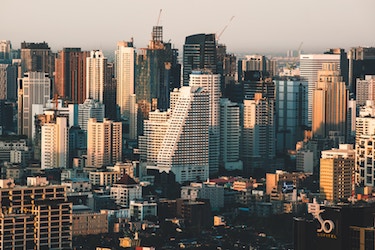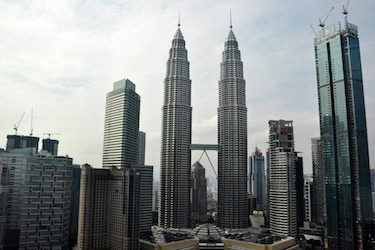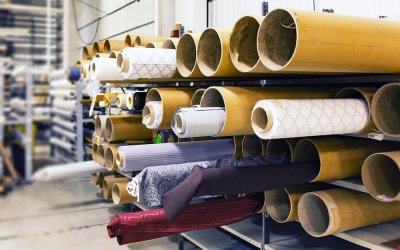How do you diversify your supply chain and minimize the disruptions that might stem from natural disasters, geopolitical events, or other unexpected circumstances?
This is a question many importers have asked themselves in the last few weeks.
With an unpredictable trade war that has gone on since 2018 and a disease outbreak that has almost completely shut down Chinese manufacturing, many have realized that relying too much on any one country for suppliers can bring about major supply chain disruptions.
In the same way that an investor diversifies their holdings to avoid relying on the performance of a single stock, importers have realized that maintaining a stable of suppliers in various regions can help them mitigate risk.

Map of SE Asia (Source)
In recent years, and especially 2018-2019, many importers have shifted some or all of their production to Southeast Asia, and countries like Vietnam, Thailand, and Malaysia have become more attractive due to the trade war and the rising wages in China.
These three countries are the region’s largest exporters, and in this article, we provide information about each one that is relevant to any importer considering suppliers in the region.
The 3 Largest Exporters in Southeast Asia and Key Information About Each
Before diving into the information about these countries, it is important to acknowledge that today’s international supply chains are complex.
Switching from a supplier in China to one in Vietnam, for example, does not necessarily mean you are no longer dependent on Chinese manufacturing.
The reality is that many factories in Vietnam depend on their own Chinese suppliers to provide them with components and materials, and the novel coronavirus outbreak has led to production slowdowns there as well.
Despite this, it is important to keep in mind that Southeast Asia is home to a number of good manufacturing options that are worth considering alongside suppliers in other regions.
#1 Vietnam
Vietnam’s manufacturing sector, while not as diverse as China’s, is still fairly diverse for its size.
The largest export is electronics and machines, but this is mainly due to the large multinational brands like Samsung and Panasonic that have operations there, and there are few OEM factories in this category.
For small and medium-sized companies, you’ll find many manufacturers capable of producing textiles, footwear, and furniture.
However, be aware that since the start of the trade war, many of these factories have seen increased demand and are at capacity, making the process of establishing a new supplier relationship a longer one.

Saigon, Vietnam
Key Info About Vietnam:
- Total Exports: $290,395,445,000 (WTEx)
- Key Exports: Machines/Electronics, Textiles, Footwear, Furniture (OEC)
- Transport Infrastructure: 66th in the world (WEF)
- Skills of Current Workforce: 100th in the world (WEF)
- Labor Market: 83rd in the world (WEF)
- Minimum Wages: $132-190/month (ASEAN Briefing)
- Ease of Doing Business: 70th in the world (World Bank)
Although Vietnam’s transport infrastructure does not rank as highly as Thailand’s or Malaysia’s, it is still fairly developed, especially in the area of sea transportation, with 44 seaports dotting its more than 2,000-mile coastline.
Vietnam has minimum wages between $132 and $190 per month, which is significantly lower than China and lower than the other two countries on this list, though its workers tend to be less skilled.
For products that are more labor-intensive, Vietnam can be a good option.
#2 Thailand
Thailand is another large exporter in Southeast Asia, and like Vietnam, the country’s largest export is machines and electronics.
They also produce a wide range of automotive parts, have a large local supply of rubber, and produce gold and jewelry.
The country’s climate is ideally suited for growing rubber trees, making it the largest rubber producer in the world, and this is advantageous for importers who require rubber as an input to their product.

Bangkok, Thailand
Key Info About Thailand:
- Total Exports: $249,777,335,000 (WTEx)
- Key Exports: Machines/Electronics, Vehicles, Plastics and Rubber, Gold and Jewelry (OEC)
- Transport Infrastructure: 53rd in the world (WEF)
- Labor Market: 46th in the world (WEF)
- Skills of Current Workforce: 91st in the world (WEF)
- Minimum Wages: $10-11/day (~$215-236/month) (ASEAN Briefing)
- Ease of Doing Business: 21st in the world (World Bank)
Thailand has been putting significant investment into its infrastructure, and through its Eastern Economic Corridor plan is putting a further $43 billion into its development.
Like Vietnam, it has a long coastline and good logistics performance to help ensure the timeliness of shipments.
The country’s wages have risen significantly in recent years, making them somewhat less competitive on price, but Thailand’s workers tend to be slightly more skilled than Vietnam’s.
Thailand’s accelerating infrastructure development and the availability of rubber can make it attractive for importers.
#3 Malaysia
Similar to the other two countries above, machines and electronic equipment make up the largest percentage of exports, including integrated circuits, office machine parts, and broadcasting equipment.
The country also produces a range of measuring instruments such as oscilloscopes and orthopedic appliances, and like Thailand, it is one of the world’s top rubber producers.
Malaysia is home to many very highly-skilled workers with extensive training, but this comes at a price, with higher wages than the other large Southeast Asian exporters.

Kuala Lumpur, Malaysia
Key Info About Malaysia:
- Total Exports: $247,285,745,000 (WTEx)
- Key Exports: Machines/Electronics, Instruments, Rubber, Metals (OEC)
- Transport Infrastructure: 29th in the world (WEF)
- Labor Market: 20th in the world (WEF)
- Skills of Current Workforce: 32nd in the world (WEF)
- Minimum Wages: $270-295/month (ASEAN Briefing)
- Ease of Doing Business: 12th in the world (World Bank)
Malaysia is highly rated for its ease of doing business and the country has made many reforms to make it easier to get permits and trade across borders.
The country’s transportation infrastructure is very well developed, especially its sea liner services, and is home to two of the largest seaports in Asia
Malaysia can be a good fit for importers who want to do business in an upper-middle-income country with highly trained workers.
Summary:
Supply chain diversification allows importers to minimize risks in their supply chain and Southeast Asia offers a range of options for manufacturing.
As the largest importers in the region, Vietnam, Thailand, and Malaysia can produce products in many categories, but each has its specialties, benefits, and drawbacks.
Depending on your product and specific needs, one of them may offer a good alternative to manufacturing in China.
When considering a new supplier in one of these Southeast Asian countries, it is a good idea to consider conducting a factory audit to aid you in your assessment.
Doing so is a good way to help ensure that you are able to strike the appropriate balance between price and quality in your sourcing efforts.
If you are planning to work with a new factory and want to learn more about how to assess their capabilities, we recommend downloading the following guide.
Free Guide
How to Prepare for a Factory Audit
A factory audit helps you assess a supplier's systems, capacity, workplace environment, or capabilities to ensure they meet your requirements as a buyer.
But which type of audit should you conduct, and which points should you cover on your checklist? In this free guide, you'll learn how to run an effective supplier assessment.





0 Comments